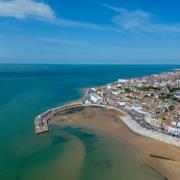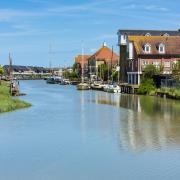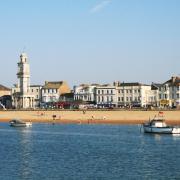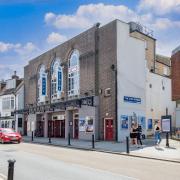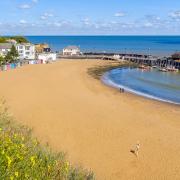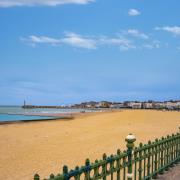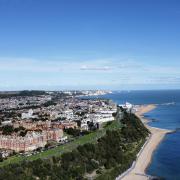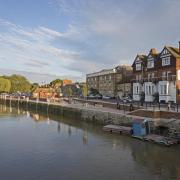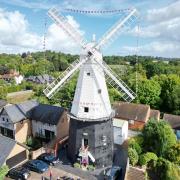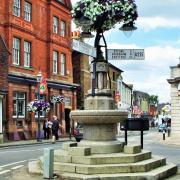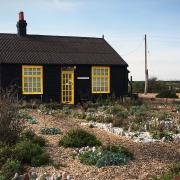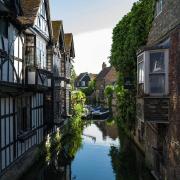We look at 20 facts, theories and mysteries connected with the always-intriguing Garden of England

1. In October 1532, while on their way to Calais to meet King Francis I, newlyweds Henry VIII and Ann Boleyn stopped off at Shurland Hall near Eastchurch on the Isle of Sheppey. The royal couple spent three days of their honeymoon at the home of Thomas Cheyne, a particular favourite of Ann Boleyn, who is said to have become nearly bankrupt in order to accommodate His Royal Highness and his impressive appetite.
2. The world’s oldest horse fossil was found at Studd Hill, Herne Bay in 1838 and has recently been dated as 54 million years old, giving Herne Bay the special privilege of being considered the official birthplace of the horse.
3. Kent is home to one of only three ‘Royal’ towns in the UK. Royal Tunbridge Wells was granted its official regal title in 1909 after Edward VII granted the prefix in special recognition of the town’s connections with the royal family since the Stuart dynasty.
4. John Buchan wrote The 39 Steps while bedridden in Kent. Suffering from stomach ulcers, he wrote his famed novel to distract himself from the excruciating pain. He even took inspiration from the nearby North Foreland and the 78 steps from the villa to the beach, although why the number of steps was halved is a mystery.
5. Leeds Castle is known as the ‘Ladies’ Castle’ because so many future Queens of England have resided within its protective walls. Eleanor of Castile and Margaret of France, Edward I’s two wives; Philippa of Hainault, wife of Edward III; Catherine de Valois, Henry V’s spouse; Catherine of Aragon, the first wife of Henry VIII, even his daughter and future queen Elizabeth all called the Kent castle home.
6. Comedy giants Laurel and Hardy opened The Romney, Hythe & Dymchurch Railway in 1947. The line showcases some of Kent’s most breathtaking scenery including the picturesque Cinque Port of Hythe, continuing along to the fishermen’s cottages and lighthouses at Dungeness. The stars of the big screen delighted the large crowds who turned out to see them despite heavy rain.
7. For Somerset Maugham, the renowned novelist who was orphaned as a youngster and went to live with his uncle in Whitstable, his schooldays at Kings School Canterbury were anything but ‘the best days of his life.’ Not only was his first language was French but he also developed a stammer he never quite overcame. Despite this, his ashes were scattered at Kings School after his death in 1965.
8. Britain’s only officially recognised desert is located at Dungeness, the shingle beach at the southernmost point in Kent. Visitors to this unique British spot can expect to see beautifully bare shingle, gravel and shell landscapes which attract rare breeds such as the Spoonbill.
9. Kent’s iconic title as the Garden of England dates back 400 years. Henry VIII allegedly once sampled a bowl of cherries produced in Kent and was so delighted with the flavour that the county became known as the Garden of England.
10. Kent is the proud supplier of Wimbledon’s famed strawberries. Each juicy red berry must be between 25mm-45mm in diameter, fully red all over and without even the hint of a defect. Love all.
11 Between Canterbury, Herne Bay, Whitstable and Faversham, the Blean is among the UK’s largest areas of ancient woodlands and recognised for its importance to local wildlife. The woodland is also perfect for outdoor activities, including walking, cycling and horse riding.
12. Kent is home to the world’s first audio sweet shop. Sweet Sol, in Herne Bay, is the first of its kind and has a recording studio, gluten-free, sugar-free and normal sweets, healthy juices and even healthy workshops.
13. Britain’s best-loved spy, James Bond, is among many famous names linked to the county. Bond author Ian Fleming had a holiday home at St Margaret’s Bay where he wrote “the spy story to end all spy stories.” The novelist loved to play golf and would frequently escape to Kent to indulge his passion on its various links.
14. Kent is ideally situated for many swashbuckling stories of pirates and smugglers. For example, it is said that the Walnut Tree Inn at Romney Marsh was the headquarters of the infamous Aldington Gang, a band of smugglers roaming the marshes and shores of Kent. From a small window on the southern side of the inn, they used to shine a light to signal to their comrades that the coast was clear.
15. In 1899 Dame Ellen Terry, Britain’s leading Shakespearan actress at the time, bought Smallhythe Place after falling in love with it after seeing it while out in her pony and trap. Smallhythe became her country retreat and she lived there happily until her death. Shakespeare plays are still performed here today in her honour.
16. Biddenden Vineyards, established in 1969, is Kent’s oldest commercial vineyard. The vineyards have grown from little more than a third of an acre to 24 acres today. The Barnes family produces 80,000 bottles per year and all vine work on the estate is still carried out by hand, including pruning, canopy management and picking.
17. The first railway line was opened in Kent. The Canterbury and Whitstable Railway, fondly known as the Crab and Winkle Line, was an early British railway that opened in 1830 between Canterbury and Whitstable and was even visited by Isambard Kingdom Brunel.
18. The Lady in the Woods is a sculpture in the tiny forest at Otterden. Carved from oak, it is almost nine feet tall and has a prominent baby bump. Some say that a Second World War soldier carved her after returning home from service to find his wife with another man.
19. South Foreland Lighthouse near Dover was the first to use electricity in 1859 – two decades before the lighbulb was invented. It was also home of the first transmission of ship-to-shore and international radio messages.
20. One of Kent’s villages truly is unique. Apart from its castle and the church, Chiddingstone is owned by the National Trust and is the UK’s only village with such a lofty status.




